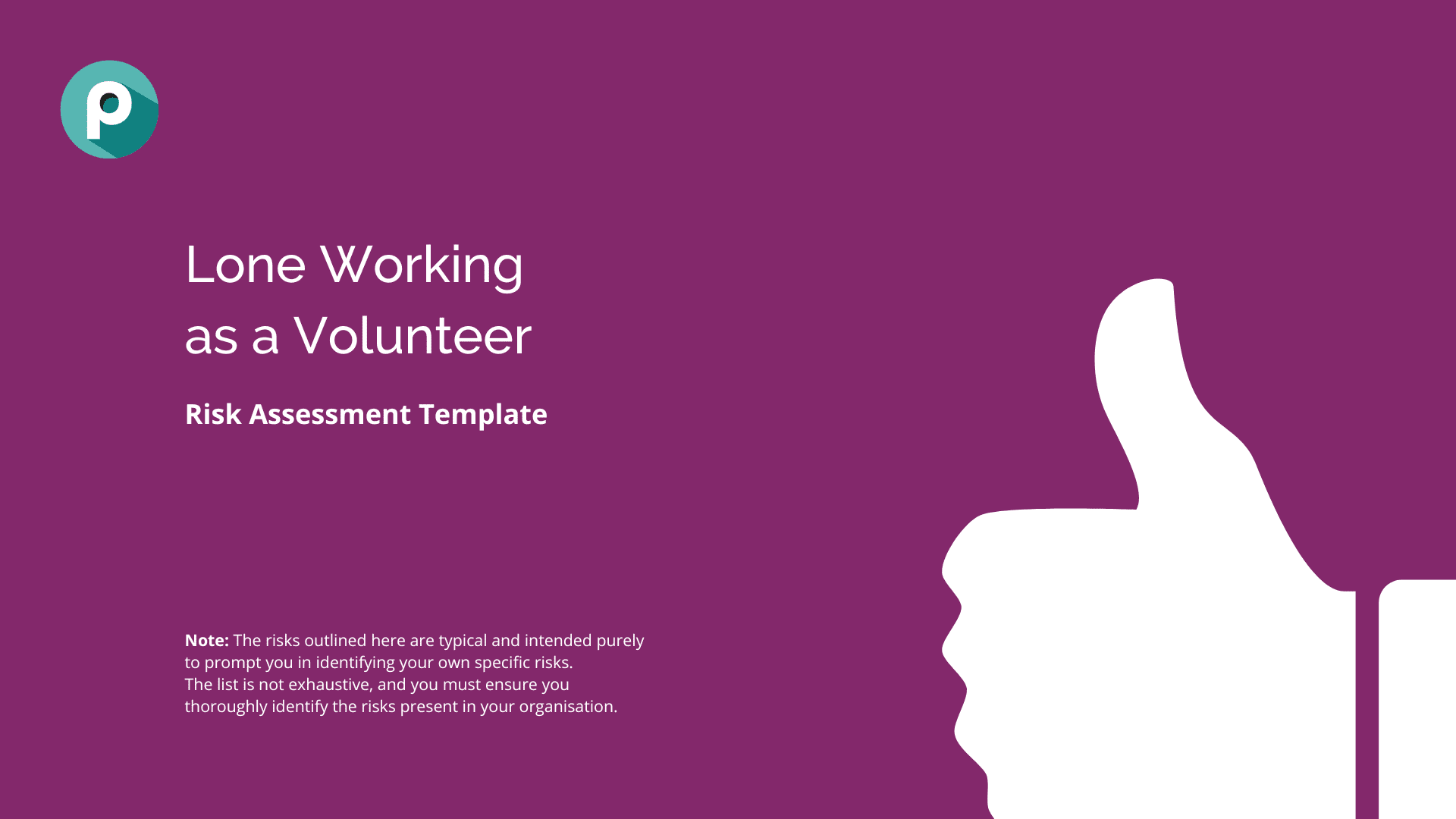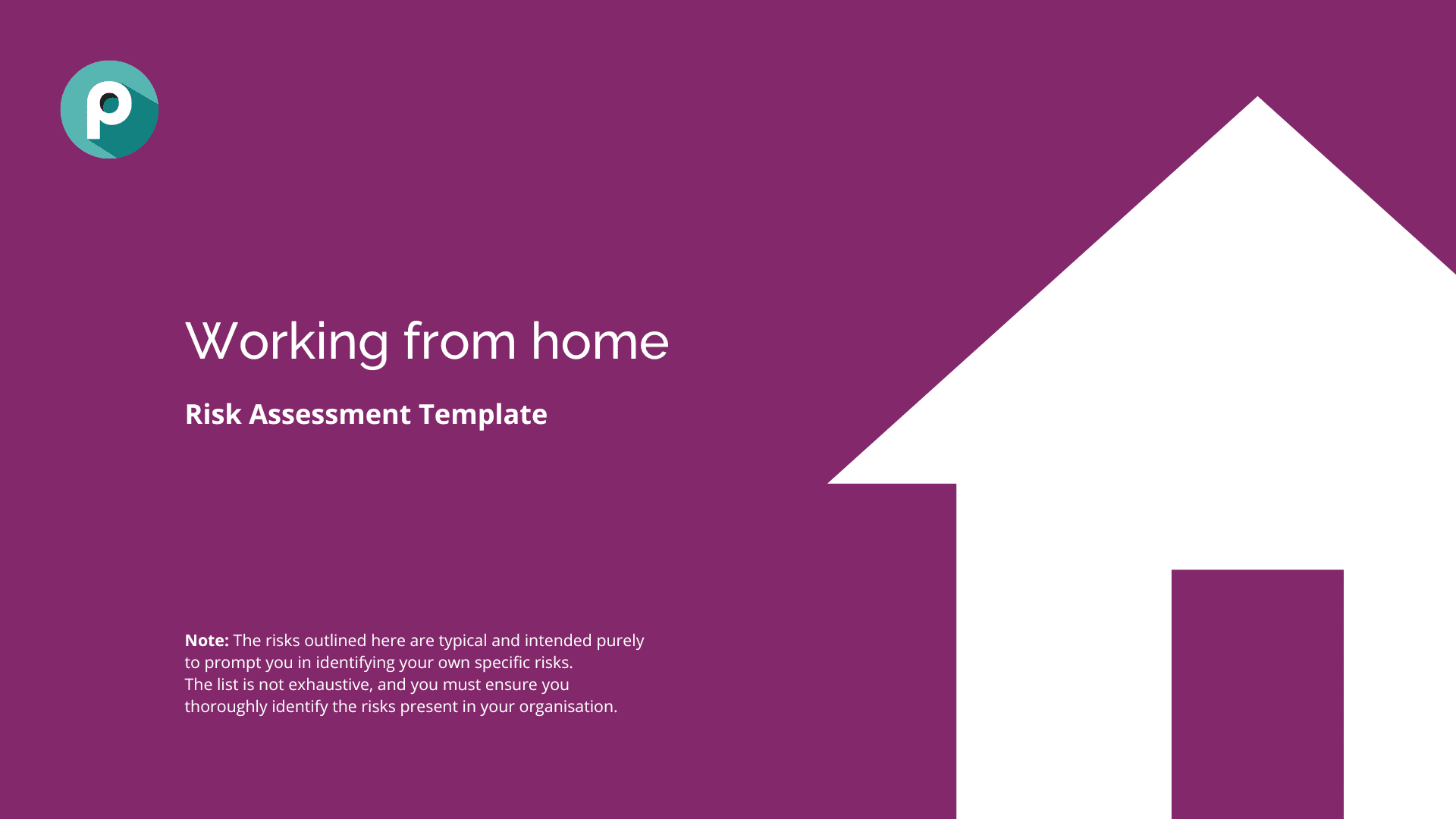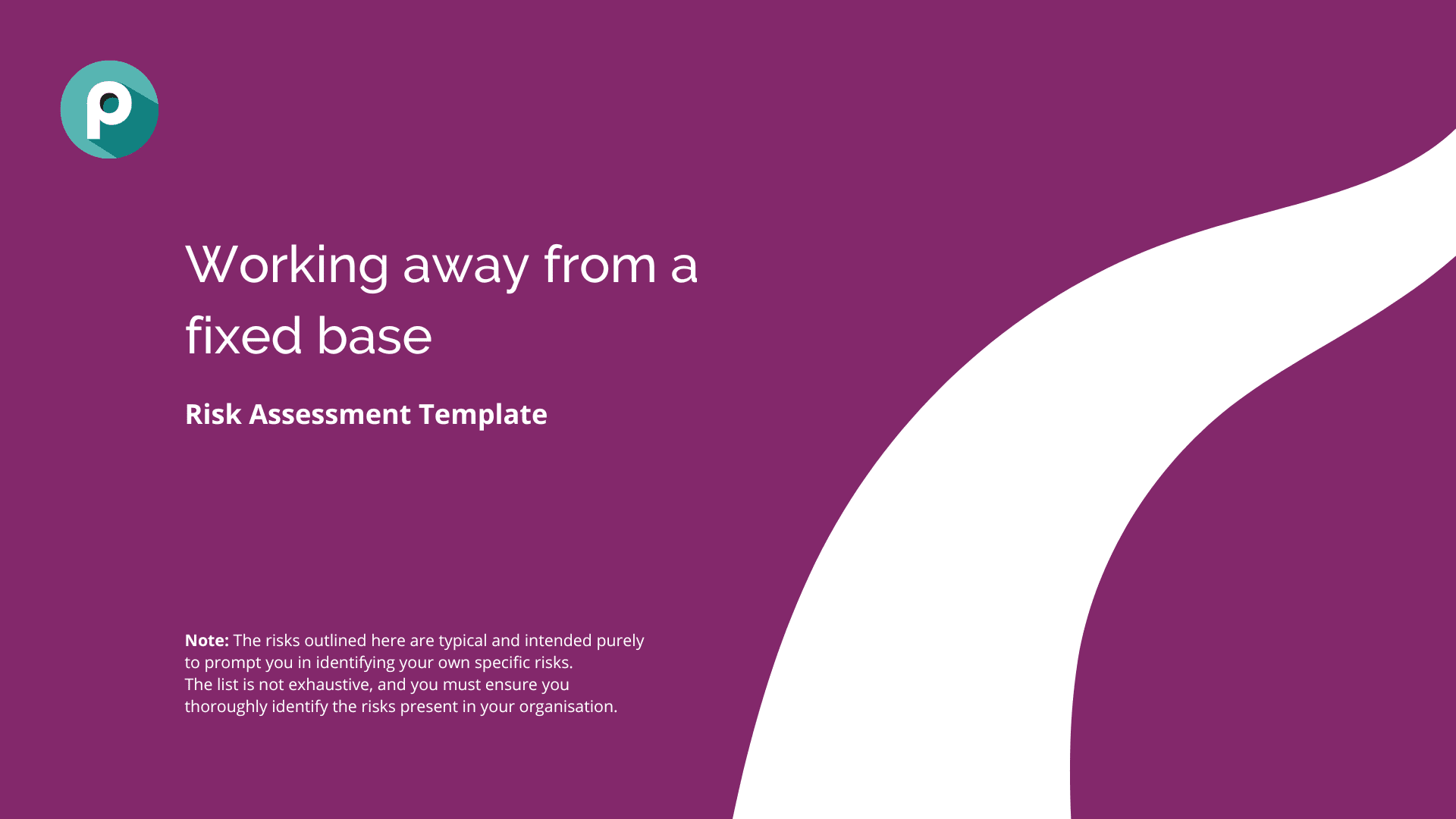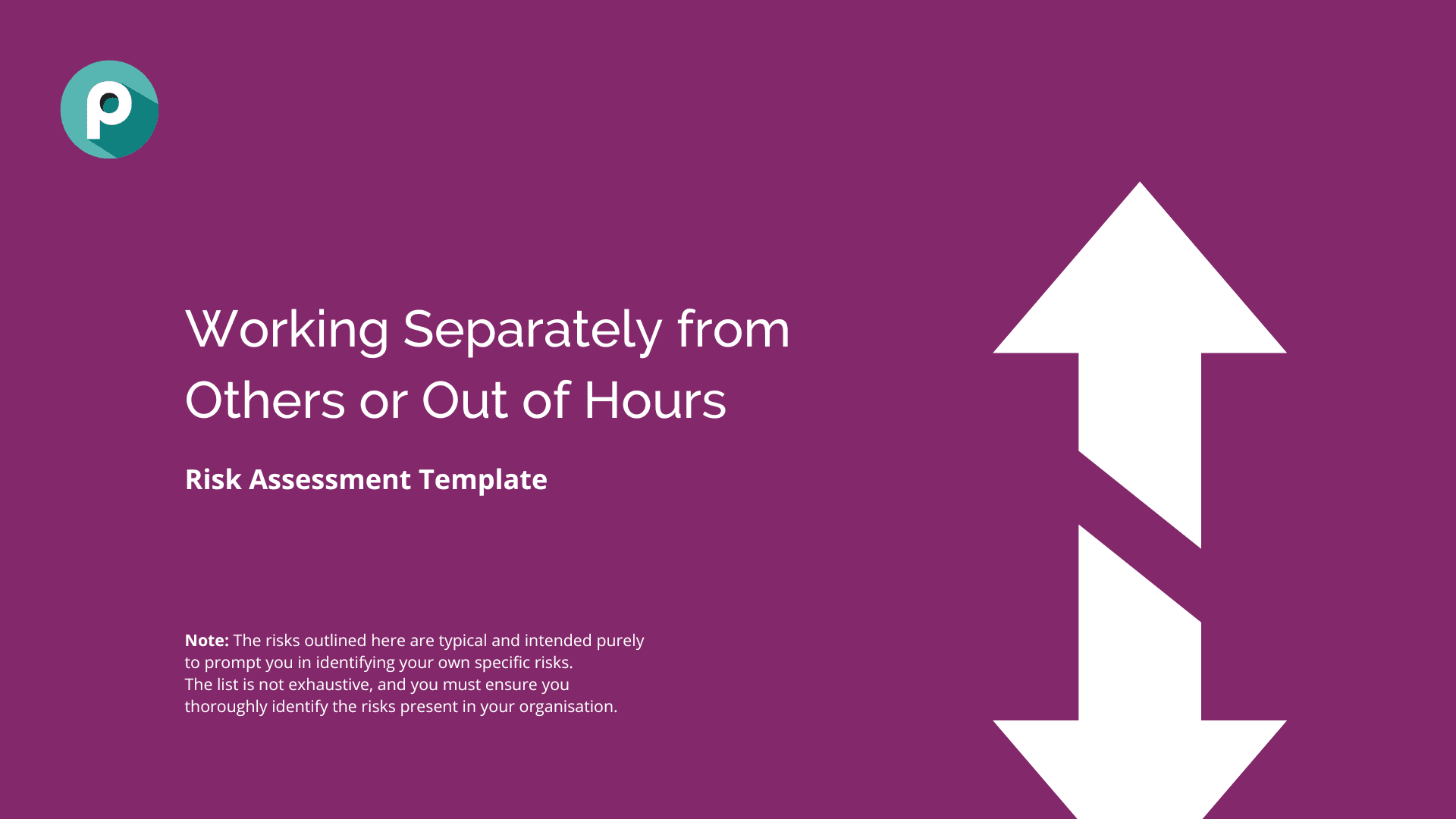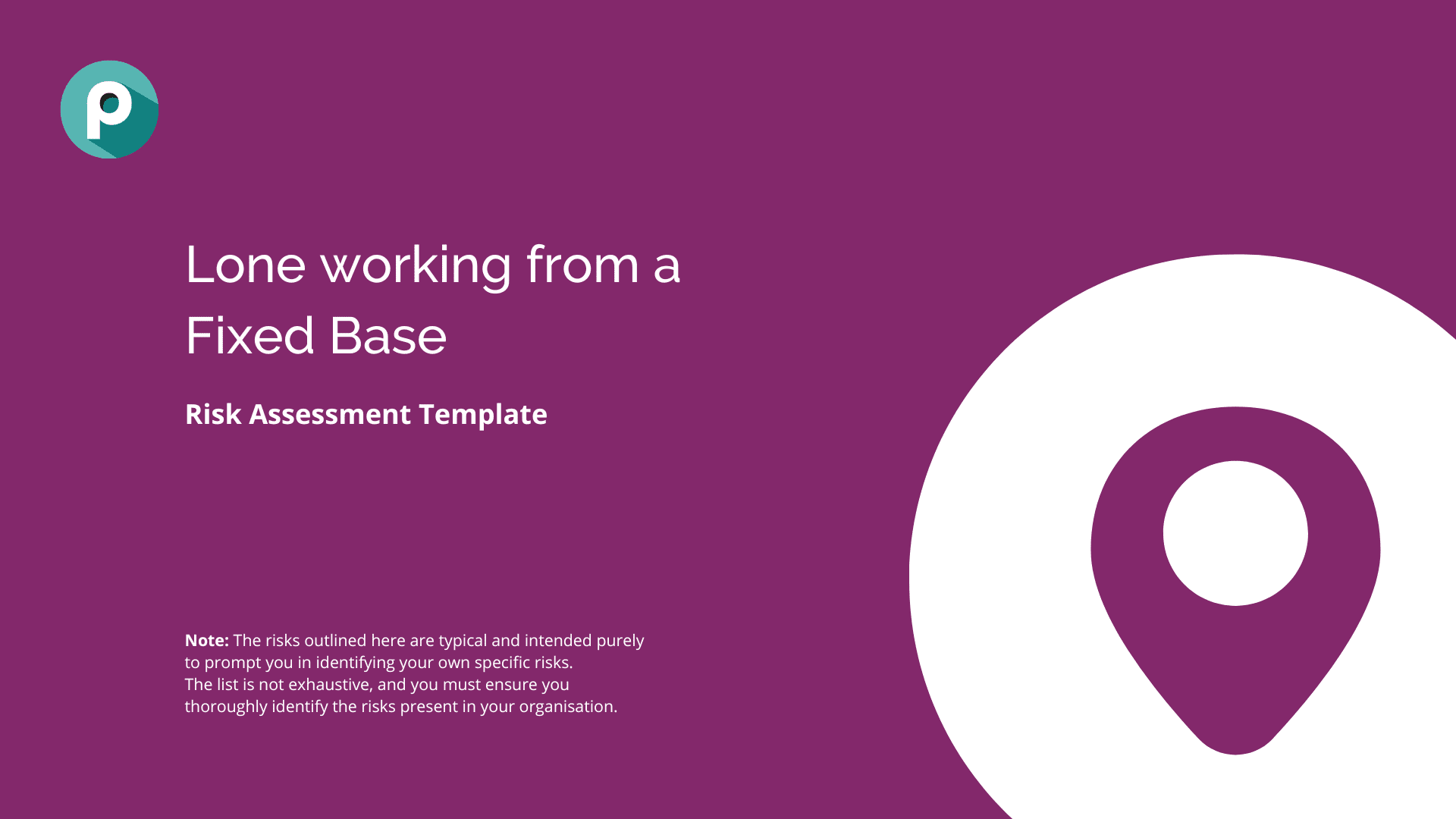If you’re responsible for the health and safety of your team, you will definitely have heard of a risk assessment. But what is it and why is it important? We give you a breakdown of this essential document, and how to get started in creating it.
What is a risk assessment?
A risk assessment is a document that measures the likelihood and impact of hazards that someone faces in their role at work. Each hazard is broken down with answers to the following questions:
- Who might be harmed
- Current control measures (e.g. procedures in place to help prevent the risk)
- Risk rating, based on a risk matrix (more on this later)
- Further action required
- Person responsible
- Action deadline
- A note to say whether this has been completed
A risk matrix is a table that provides a score against the likelihood of something happening, and the severity. Here’s what it looks like, and you’d use this to give each hazard its own risk rating so you know where to focus.
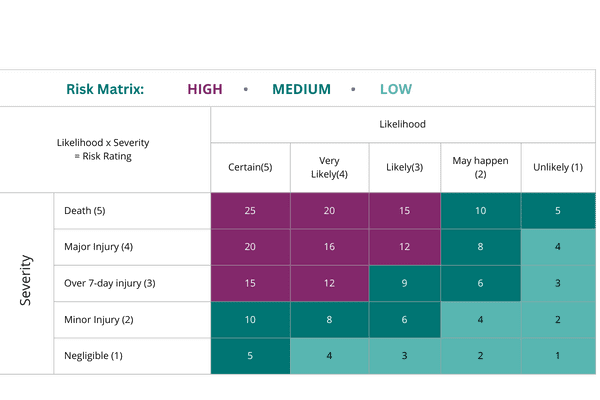
Why do you need one?
Simply put, proper planning and foresight can be the difference between life and death. Where human error is to blame, even lack of proper training or supervision can be the root cause and the employer’s responsibility under the Health & Safety Act of 1974.
In January 2023, two firms in Birmingham were fined £210,000, and one of the directors given a suspended jail sentence after 37-year-old Tawanda Chamwandayita was crushed by panes of glass he was unloading. The Health & Safety Executive, which was working alongside West Midlands police said that the
“Inexperienced and vulnerable workers, some of them just 17-years-old, were working in dangerous conditions with no supervision, inadequate equipment and without any planning or risk assessment in place.”
It’s obvious that those working in high risk environments or involved in hazardous tasks need a risk assessment in place, but outside that there are risks in commuting, slips and dealing with the public to consider.
If someone is a lone worker, or they work alone for any amount of time, these risks can be heightened, and should especially be covered.
Different types of risk assessment
If your workers are working in a role which comes with task, environmental, or people-related risks, you’ll often find that there are different types of assessments which fit these occupations.
For example, a construction worker might need a something specific to manual handling, or falls from a height.
Another example might be a risk assessment for lone working, although we would recommend adding this consideration into an overall risk assessment, as the hazards are the same, but just heightened when working alone.
The HSE Identifies five risk profiles for those who work alone, and we have created templates for each of these:
Click on the icons to access your editable template
What is a dynamic risk assessment?
A dynamic risk assessment is one that is continuously reviewed as the worker feeds back on or identifies emerging risks. While you might only review a risk assessment periodically for workers in an office setting, a dynamic risk assessment is better suited to those who work in high risk environments or roles, including lone working.
How to create a risk assessment
After answering the points in the “what is a risk assessment” section, the next step would be to put the measures you identify in place, and record your findings. If it’s not going according to plan when you review, then you’ll need to reassess.
Regular communication with the workers involved is essential in not only identifying the hazards in the first place, but reviewing how effective the measures are, and reaching an understanding for who’s responsible for what.
For example, a manager is responsible for putting in place a communication method for lone workers, but it’s the lone worker’s responsibility to make sure that they’re using it. This is where training and policy comes in to reiterate the message and protocols. If you have lone workers, take a look at our lone worker policy document to get an idea of what to include, or just use this editable template as it is.
When to create or review it
A risk assessment should be completed before any hazardous task or project. Regular reviews throughout the year give you a better opportunity to identify any gaps, but should certainly be carried out after an incident or accident to see if lessons can be learned and improvements made.
Getting started
Drawing on Health and Safety expertise and resources, our 5 steps to a risk assessment takes you through:
- Assessing Risk
- Mitigating Risk
- Implementing Controls
- Training
- Ongoing Management

